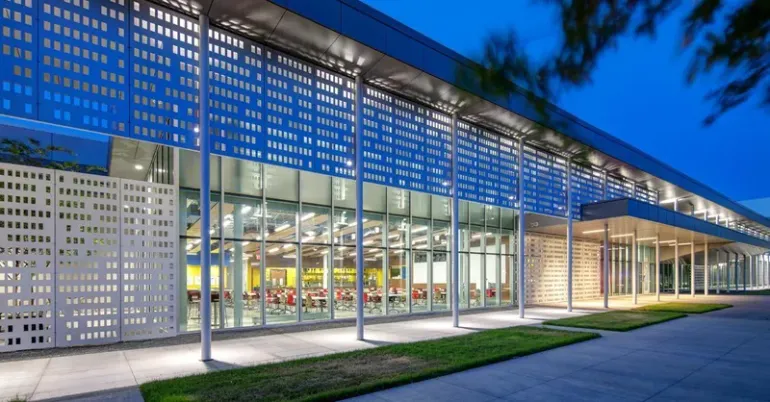As data centers pile into the construction queue, Redwood City, California-based DPR Construction is seeing emerging pressures for both general contractors and project owners.
For example, project owners are under increasing strain to complete these data center projects quickly, said Andy Kirby, DPR’s central region advanced tech market leader. That’s putting tension on planning and execution timelines for general contractors.
“Years ago, we were seeing facilities in the range of 30 to 40 megawatts, and now it’s 500 megawatts to 1 gigawatt,” said Kirby. “That means hundreds of people on the general contractor’s side, not to mention trade partners. That is encouraging, but we need to start planning for it now.”
Here, Kirby talks with Construction Dive about offsite construction, DPR’s approach to labor and the use of technologies in data center builds.
Editor’s note: This interview has been edited for clarity and brevity.
CONSTRUCTION DIVE: As data center projects continue to ramp up, what strategies are you implementing to ensure a steady pipeline of labor, especially in areas where the workforce may be already stretched?
ANDY KIRBY: DPR is working on creating opportunities for offsite prefabrication as well as training of skilled labor.
For the offsite fabrication, we are looking at how we can manufacture building components that could be assembled onsite. We are also looking at mechanical and electrical assemblies that will be created at warehouses offsite with machines that result in reduced skilled labor for onsite installation.

Andy Kirby
Permission granted by DPR
On the labor side, we take a two-pronged approach.
We have prioritized internal craft training programs for current workers to expand their skills and teach them how to grow their careers with mentors, which in turn, promotes labor retention.
To grow the pipeline of new workers, we partner with organizations like the Construction Industry Education Foundation to actively support education opportunities with local high schools and trade institutions to garner interest in the construction trades.
What are some specific examples where prefab had a significant impact on cost, safety or quality in a recent DPR data center project?
With the growing demand, it isn’t just important that these projects are delivered fast, but that they are delivered with quality to grow and scale.
On many data center projects across the state of Texas, we have been able to fabricate electrical rooms, central utility plants and major mechanical and electrical piping racks to eliminate onsite construction — increasing efficiency along with quality as the most complex scopes are managed offsite in a controlled environment.
When these elements are able to be assembled and installed, instead of built on the site, manpower is also decreased, which impacts cost and safety.
What technologies or project management practices have been most effective in balancing the need for speed with maintaining quality and cost?
We use project management software and cost data tools to create analytic dashboards for our clients. Real-time data informs our clients and allows them to make decisions around their business deals.
Most often, costs take a back seat to a high quality and a tight schedule on a construction project. However, we provide value to our customers through our VDC specialty. By digitally building three-dimensional models of intricate installation and overlapping scopes, teams can plan ahead and identify potential conflicts.
This increases quality and reduces the cost of rework.
How is DPR addressing supply chain constraints, particularly in ensuring timely delivery of materials to meet the demands of fast project schedules?
DPR works with nationwide networks of vendors and material suppliers to help inform our schedules and budgets very early on in the design process.
We use this data to create scenarios of delivery dates for long lead equipment as well as alternate solutions for power-on dates.
Some solutions include temporary measures to meet milestones in the schedule that can be replaced when the permanent equipment arrives. Other times we are working with our national networks to source materials to ensure turnover dates are achieved.
How are you integrating energy-efficient practices and sustainability into data center builds?
We have seen many of the recent data center projects evaluate both power consumption as well as water efficiency to integrate into the design. It is imperative that we continue to drive down the use of some of our most vulnerable natural resources while still delivering an effective building that performs at the scale it is intended.
Any other trends DPR is keeping tabs on regarding data center construction?
DPR Construction continues to be a leader in building cutting-edge data centers which include direct-to-the-chip cooling.
With the increased power in the racks, and therefore overall heat creation, our expertise allows us to be creative in our strategies to cool these high performing chips to allow for maximum performance.
